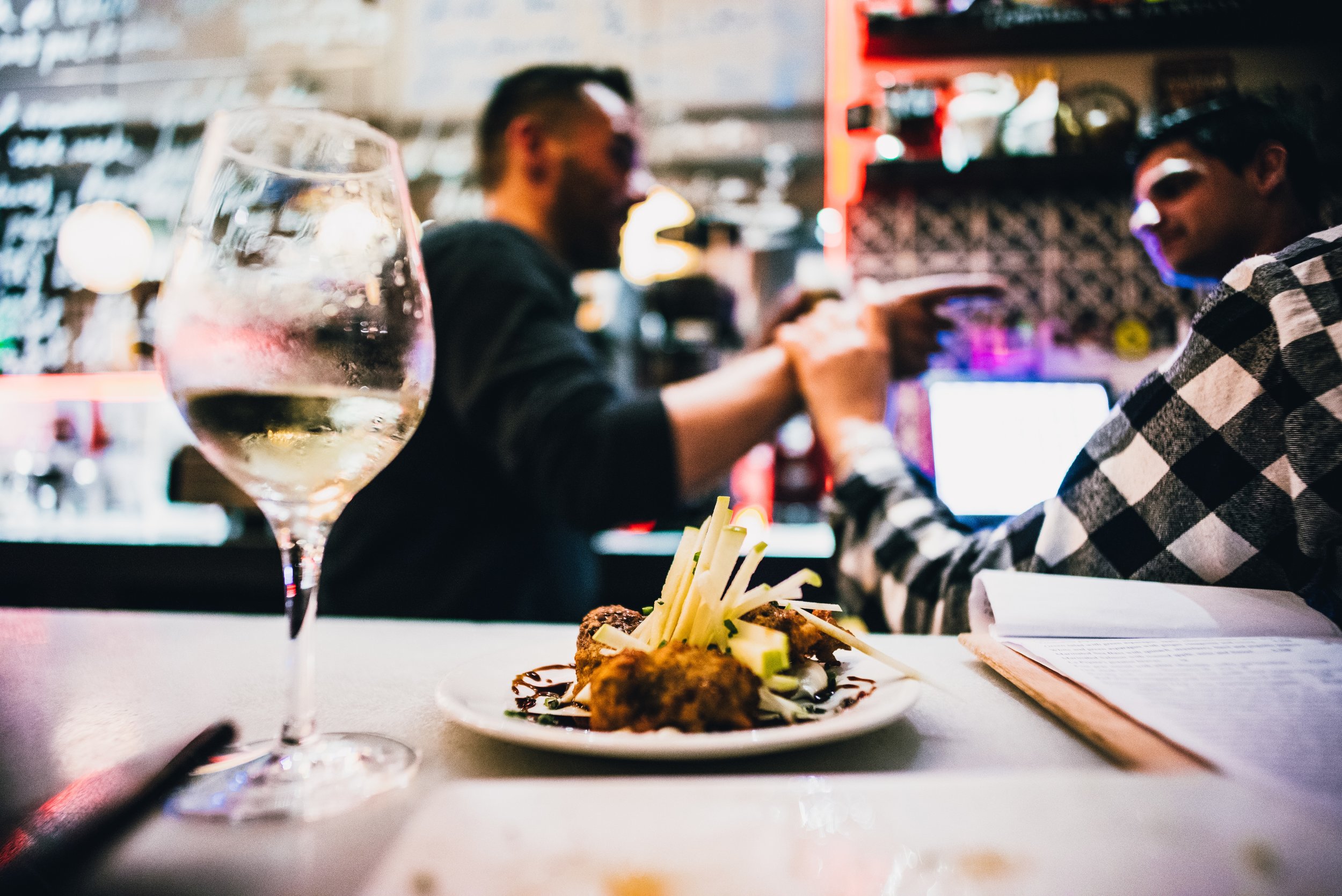To compliment the other Barcelona post, I took my camera with me when I went to get a bite to eat in the evening. I think the last time I really did that was in Tokyo, so it was a little interesting to shoot in the dark again :)
It’s not really easy, I will be honest. You have to hold the camera very still—you can’t just point and shoot. Also, being the hipster that I am, I was using a manual lens. Manual lens at night with a camera offering no image stabilisation :D
I went for tapas in a nice little restaurant suggested by my hotel, called “la pepita”.
I took photos of a lot of the food, but not in the normal “instagram” food way. Perhaps it was the wine, I don’t know? It was sublime, and reasonably priced. Would recommend.
Purple fringing due to the 21mm Voigtlander being made for M-mount, but I left it in here for character. And laziness.
Food shots below...
Shooting at night has its challenges. The dynamic range of the human eye is very high, very broad. We are able to resolve lots of details in shadows whilst simultaneously viewing and capturing all the details in highlights. Most digital sensors will blow out the highlights, so that skies are just masses of white. When it comes to shooting at night, film shooters typically push the exposure such that there's a lot of grain, akin to using "high ISO" in the digital realm (different films have different ISO numbers, the higher the brighter, and digital readings are merely convention).
So, shooting at night means that you need to either use a tripod and use slower shutter speeds, or shoot with regular shutter speeds and push up the ISO. This is where faster lenses come in. Lenses that have large apertures allow more light in. They are more expensive, but you're generally paying for the glass. If you don't shoot at night, you don't really need them. However, it can be fun, and is something I will explore in more detail in the near future. I hope you enjoyed the few shots so far...








